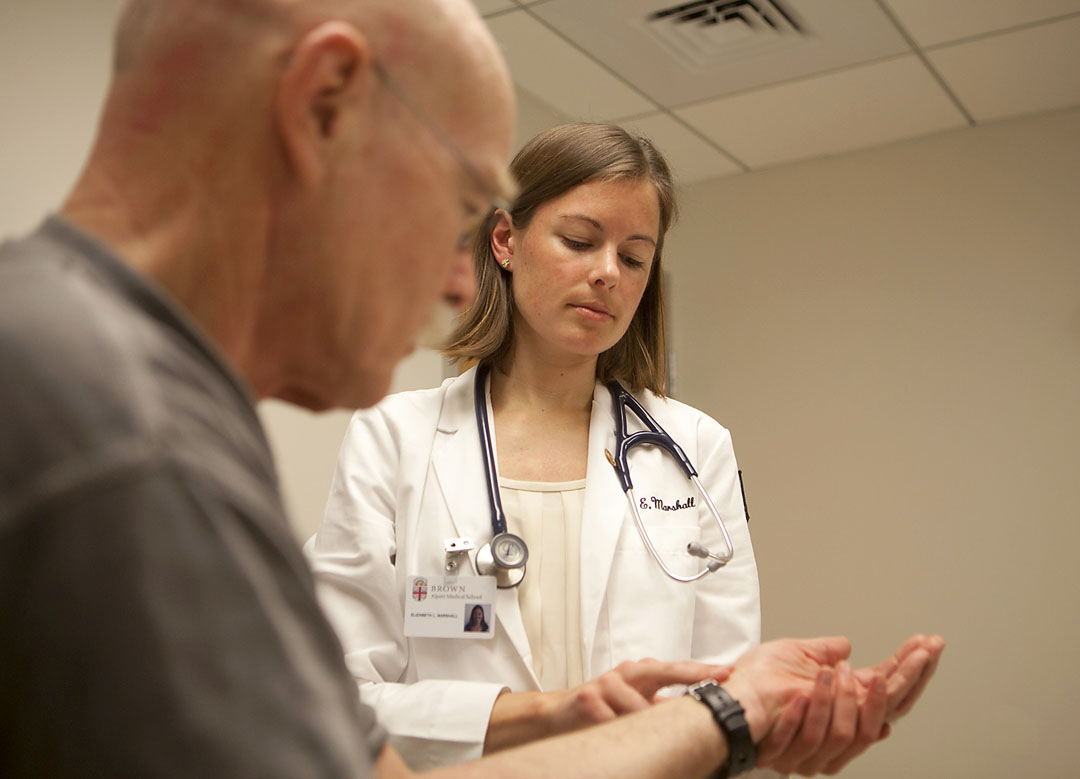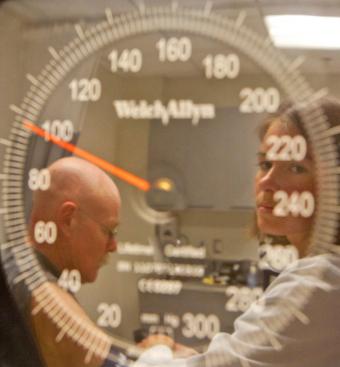PROVIDENCE, R.I. [Brown University] — To better train doctors for an aging nation, the Warren Alpert Medical School of Brown University has more than tripled aging content in lectures, begun anatomy lab “treasure hunts” for physical signs of disease and healthy aging, and expanded exposures to aging in clerkships, electives, residency, and even continuing medical education. In a new paper in the journal Gerontology and Geriatrics Education, the architects of the reform argue that Brown demonstrates that thorough integration of aging-related content across an entire medical curriculum is possible.
Geriatrics is a medical specialty, but healthy aging will occur in all older persons, and it changes the face and behavior of diseases that occur in elders, said Richard Besdine, professor of medicine, who led a core team of five faculty members and more than two dozen collaborators in implementing the sweeping changes. Aging cuts across all other medical disciplines, except perhaps pediatrics and obstetrics, he said, and therefore merits inclusion in all aspects of medical education.
“My goal for this educational innovation is not to produce more geriatricians,” said Besdine, a former dean of medicine at Brown. “My goal is to make sure that every physician who graduates from the Alpert Medical School will be as good at taking care of elderly patients as she will be at taking care of young and middle-aged patients.”

A theme throughout the curriculum, said co-author Renee Shield, director of the Resource Center for Geriatrics Education, was to decouple the concepts of aging and disease. Students, she said, need to understand the medical manifestations of being old, which encompass a much broader set of issues than disease and dying.
In 2005 Besdine, Shield, and their co-authors won a $2-million, four-year grant from the Donald W. Reynolds Foundation to enhance geriatric education. The team decided not to merely create an elective course or launch a lecture series. Instead they pursued a mantra of “every student, every course, every year.”
The moment was opportune, in that the Alpert Medical School was planning a broader curriculum overhaul at the time.
The result was a set of 15 curricular enhancements, including 80 hours of lecture content (up from 22 hours), more than 150 exam questions, programs to connect doctoring students with residents in assisted living facilities, an elective concentration in aging, an end-of-life theme for clerkships, emergency medicine case studies, a fellowship program in hospice and palliative medicine, and regular publication of papers on aging in the peer-reviewed literature, and in the state medical journal.
Most of the enhancements required only a one-time effort to develop and integrate into the curriculum. Besdine’s team is making them freely available to colleagues.
Six years later, and two years after the grant expired, the geriatric additions to the curriculum are still fully in place. “These changes are all embedded in the courses,” said Shield.
Anatomy, for example
Perhaps the most dramatic enhancement is the integration of aging education into the year-long anatomy class that first-year students take. As the students dissect their cadavers, Besdine said, it makes sense to acknowledge not just the bodies’ anatomy, but also their age.
“From 1971 to 2006, first-year medical students at Brown dissected human bodies to learn anatomy,” Besdine said. “In 2006, we noticed that the mean age of the cadavers was 80.”
Each year since, Besdine has tabulated the causes of death on the cadavers’ death certificates — they always have closely mirrored leading causes of death nationwide — and gives a lecture in the first week of the class about causes of death and how they’ll relate to studying anatomy. In addition, students get a list of 30 common disease findings in elders and physiological features of healthy aging, such as reduced muscle tissue and organ size, to look for in their cadavers. Geriatricians also spend 30 minutes at each dissection table a few times during the course to look at the cadaver’s anatomy and determine how factors of aging and disease might have affected the individual while he or she was still alive.
Besdine recalls looking at the hand muscles of a woman in her 80s who used to play the violin. He noticed that even for her age, they weren’t nearly as developed given her career as they should have been. With the students he deduced, and later he confirmed, that she had died of the muscle-wasting disease ALS.
Novel measures
For all the changes made at Brown, Besdine said the cost and effort required would be much less for any other school that wanted to do the same thing.
“We broke the ground,” Besdine said. “If we had a model in 2006 of what we have now we could have done it for a quarter of the cost.”
The team is confident that the changes have been implemented well and are having a positive effect on student learning. The reason is that throughout the four years of the grant, they evaluated their effects for continuous improvement. For example, they recruited several student volunteers to track the quantity and quality of aging content in their lectures each semester. Other students volunteered to keep a journal of their thoughts about what they were hearing and doing related to aging in the curriculum. They convened additional students in focus groups to get their feedback (each student participant earned an honorarium for this involvement).
One such focus group student quoted in the paper makes a pointed argument for integrating aging content into the curriculum rather than carving time out to treat it as a specialty: “[Be] careful about how different you make it from the rest of our experiences. ... The more integration, the less stigmatized it becomes.”
In addition to Besdine and Shield, other authors on the paper are Lynn McNicoll, Susan Campbell, and Terrie “Fox” Wetle.

